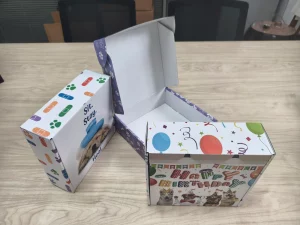Everything You Need to Know About Recycled Paper
Recycling paper has become an integral part of our efforts to create a sustainable and eco-friendly world. The process of recycling paper not only helps reduce waste but also saves valuable resources, making it an essential practice for both individuals and businesses. This comprehensive guide aims to provide you with everything you need to know about recycled paper, its benefits, and the paper recycling process.
Sommario
Introduction to Recycled Paper
Recycled paper is paper that has been reprocessed from waste paper rather than newly sourced raw materials. This not only reduces the need for new trees but also cuts down on the waste that ends up in landfills. The recycling process converts paper waste into new paper products, thereby conserving energy and reducing pollution.
What is the Process of Recycling Paper?
The paper recycling process involves several key steps:
- Collection and Sorting: Waste paper is collected from recycling bins and taken to recycling centers where it is sorted based on type and quality.
- Shredding and Pulping: The sorted paper is shredded into small pieces and mixed with water to create a pulp. This pulp is then cleaned to remove any impurities like ink or glue.
- Filtering and De-inking: The pulp is filtered and further cleaned to remove any remaining contamination through a process called de-inking.
- Refining and Bleaching: The cleaned pulp is then refined and, if necessary, bleached to remove any remaining color, making it suitable for producing new paper.
- Paper Production: The pulp is spread onto screens to drain the water and form sheets of paper. These sheets are then pressed, dried, and rolled into new paper products.
Benefits of Using Recycled Paper
Using recycled paper offers numerous benefits:
- Environmental Conservation: Recycling paper helps save trees and reduces the need for raw materials.
- Energy Saving: The energy required to recycle paper is significantly lower than producing new paper from raw materials.
- Waste Reduction: Recycling reduces the amount of waste sent to landfills, minimizing environmental pollution.
- Resource Efficiency: Reusing paper fibers depletes fewer resources and promotes sustainability.
Types of Recycled Paper Products
Recycled paper is used to manufacture various paper products, including:
- Printer Paper and Office Supplies: Commonly used in offices and households.
- Paper Packaging: Includes Sacchetti di carta kraft e Scatole di cartone ondulato.
- Paper Towels and Napkins: Everyday essentials made from recycled materials.
- Paper-Based Packaging: Used for packaging products like Scatole flip top personalizzate con chiusura magnetica.

How to Recycle Paper at Home
Recycling paper at home is straightforward and highly effective:
- Collect Paper Waste: Gather all waste paper, including newspapers, magazines, printer paper, and cardboard.
- Sort and Clean: Remove any non-paper materials such as staples, tape, and plastic coatings.
- Shred the Paper: Shredding paper makes the recycling process easier and more efficient.
- Place in Recycling Bin: Deposit the sorted and shredded paper into designated recycling bins for collection.
What Cannot Be Recycled?
Not all paper can be recycled. Items that typically cannot be recycled include:
- Grease-Stained Papers: Such as pizza boxes contaminated with food residue.
- Plastic-Coated Paper: Includes paper with plastic laminations or coatings.
- Tissues and Napkins: Due to hygiene concerns, these are often not accepted in recycling programs.
- Confidential Shredded Paper: Shredded documents may be accepted by specific recycling programs but often require special handling.
Understanding Paper Packaging
Paper packaging plays a critical role in protecting products during transport and storage while being an eco-friendly alternative to plastic packaging. Types of paper packaging include:
- Custom Kraft Boxes: Sturdy and sustainable options for various products.
- Corrugated Cardboard: Ideal for shipping and handling, offering excellent durability.
- Custom Earring Packaging Boxes: Elegant and protective for delicate items.
How Recycling Reduces Paper Waste
Recycling paper conserves landfill space and mitigates the effects of excessive paper waste. By reprocessing used paper, we can reduce the environmental footprint of paper production and curb the relentless accumulation of waste.
Local Recycling Programs
Local recycling programs often provide services to collect and process paper waste. Check with your municipal or regional recycling center for guidelines on how to participate effectively. These programs can vary in what types of paper they accept and the specific sorting requirements.

Advancements in Recycling Technology
Innovations in recycling technology continue to enhance the efficiency and effectiveness of the recycling process. Projects aimed at improving recycling technology and using more recycled fiber have made it easier to produce high-quality recycled paper.
Additional Tips for Efficient Recycling
- Study Local Guidelines: Different areas have specific rules for recycling. Make sure you are familiar with your local guidelines.
- Reduce Contamination: Ensure paper is free from food residue, plastic, and other contaminants.
- Educate and Advocate: Spread awareness about the importance of recycling and advocate for better recycling facilities and programs in your community.
Conclusione
Recycling paper is an essential practice for fostering an eco-friendly and sustainable environment. By understanding the recycling process, using recycled paper products, and participating in local recycling programs, we can significantly reduce our environmental impact and conserve valuable resources.
Key Takeaways
- Recycling reduces waste and conserves resources.
- The paper recycling process involves collection, sorting, shredding, pulping, and processing.
- Not all paper can be recycled; understanding what cannot be recycled is crucial.
- Paper packaging provides an eco-friendly alternative to plastic.
- Local recycling programs and advancements in recycling technology enhance efficiency and effectiveness in recycling efforts.
By following these guidelines and actively participating in recycling programs, we contribute to a healthier, greener planet for future generations.








